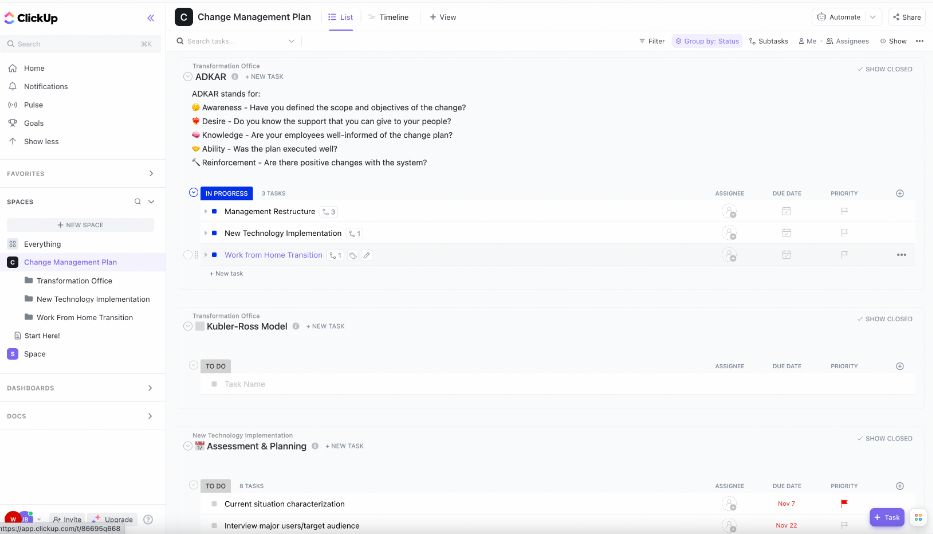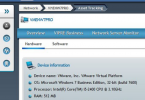Change management is a critical aspect of any digital transformation project. With the ever-evolving technological landscape, organizations need to be able to quickly adapt and implement change in order to stay ahead of the competition. This is where the ADKAR model comes in.

Photo by Alexas Fotos
What is ADKAR Framework?
The ADKAR framework is a change management model that provides a structured approach to managing change. It was created by Jeff Hiatt and is based on the concept that change management is an individual process. The term ADKAR stands for Awareness, Desire, Knowledge, Ability, and Reinforcement.
The steps in the ADKAR model are as follows:
- Awareness: This step focuses on creating awareness about the need for change. This involves communicating the reasons for the change and the benefits it will bring.
- Desire: This step focuses on building a willingness to change among stakeholders. This involves demonstrating the value of the change and inspiring stakeholders to embrace it.
- Knowledge: This step focuses on providing the knowledge required to implement the change. This involves providing information, training, and support to ensure stakeholders have the skills they need to make the change.
- Ability: This step focuses on building the ability to make the change. This involves providing the resources and support required to implement the change successfully.
- Reinforcement: This step focuses on reinforcing the change. This involves monitoring progress, celebrating successes, and addressing any challenges during the change process.
ADKAR for Beginners
The ADKAR model is designed to be easy to understand and apply, even for beginners. The model breaks down change management into simple steps that can be followed by individuals and organizations alike.
The benefits of using the ADKAR model include a structured approach to change management, improved communication and collaboration, and increased chances of success in change initiatives.
Why is the ADKAR Model Effective?
The ADKAR model is effective because it addresses the human aspect of change management. It recognizes that change is not just about implementing new technology or processes, but also about ensuring that individuals are equipped and willing to embrace the change.
By addressing the awareness, desire, knowledge, ability, and reinforcement of stakeholders, the ADKAR model ensures that change is implemented in a holistic and sustainable manner.
The Key Elements of Change Management
The 5 key elements of change management in the ADKAR model are Awareness, Desire, Knowledge, Ability, and Reinforcement. Each element plays a critical role in ensuring successful change management.
By focusing on each of these elements, organizations can ensure that stakeholders are aware of the change, motivated to embrace it, equipped with the knowledge and skills to implement it, able to carry out the change, and reinforced in their efforts.

Photo by Nataliya Vaitkevich
The Typical Stages of Change
The 4 typical stages of change in the ADKAR model are Pre-awareness, Awareness, Desire, and Knowledge. Each stage builds on the previous one and prepares stakeholders for the next step in the change process. By following this sequence of stages, organizations can ensure a smooth and successful change management process.
The R’s of Change Management
The 7 R’s of change management are Readiness, Relevance, Results, Relationships, Role Models, Rewards, and Reflection.
These elements ensure that change management is aligned with organizational goals and objectives, that stakeholders are ready to embrace the change, and that the results of the change are monitored and evaluated.
With these elements, organizations can ensure that change management is effective, efficient, and sustainable.
Main Areas of Digital Transformation
The main areas of digital transformation include technology, processes, culture, and people. These elements are interdependent and need to be addressed in a coordinated manner in order to achieve successful digital transformation.
By addressing each of these areas, organizations can ensure that their digital transformation initiatives are aligned with their overall business strategy and objectives.
The ADKAR stages provide a structured approach to managing digital change and ensure that stakeholders are fully engaged in the process thus leading to a successful and sustainable digital transformation initiative.
Managing Change for Employees in a Digital Transformation Project
Managing change for employees in a digital transformation project is critical to the initiative’s success.
The ADKAR model provides a structured approach to managing change for employees, including creating awareness about the change, building desire for the change, providing knowledge and training, building the ability to implement the change, and reinforcing the change.
Organizations can ensure that their employees are fully engaged in the digital transformation process and that the initiative is successful by implementing the ADKAR model and not missing out on these top 5 change management strategies often overlooked by digital transformation teams.
ADKAR Change Management Plan Template
The ADKAR model can be used as a template to guide change management initiatives. The template includes the five stages of the model, as well as the critical elements of each stage.
By using the ADKAR template, organizations can ensure that their change management initiatives are aligned with the model and that they are following a structured and effective approach to change management.
In conclusion, the ADKAR change management model is an effective approach to managing change in the digital age. By focusing on the Awareness, Desire, Knowledge, Ability, and Reinforcement of stakeholders, organizations can ensure that change management is implemented in a holistic and sustainable manner.
The model provides a structured approach to change management, including the use of a change management template and can be used to guide digital transformation initiatives and ensure their success.
If your project is currently in need of a free change management plan template by ClickUp.





